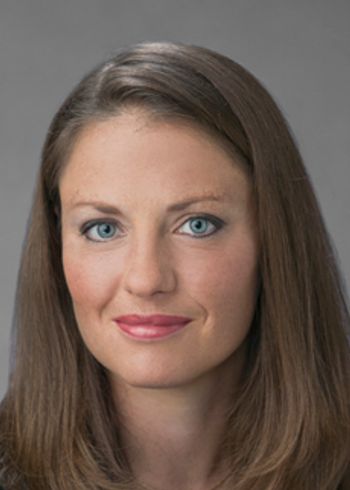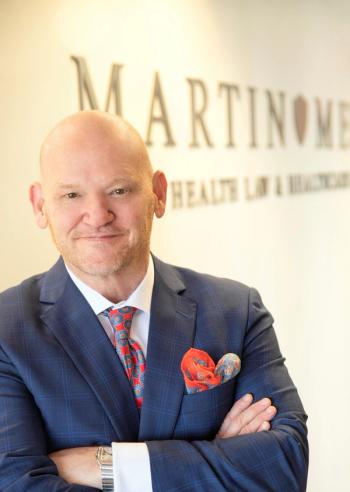
HIPAA, telehealth, and managing billing staff working remotely
Expert advice to secure your practice.
Video-chat tools such as Apple FaceTime, Skype, and Zoom are now available to physician practices that want to treat patients on a remote basis,
Michele Madison, JD, an Atlanta-based healthcare attorney at Morris, Manning, & Martin law firm, points out that OCR won’t enforce penalties for physician practices that use “non-public-facing video and audio technology that’s not secure and they won’t require business associate agreements.” Still, she advises practices to take the following steps:
- Validate that the physician or other clinician is licensed to provide care by telemedicine in the state where they’re providing the service.
- Secure verbal or written confirmation that patients understand the platform used to receive telehealth-based care isn’t secure.
- Communicate to physicians and clinicians that they must fully and completely document the interaction with patients, including their clinical findings, medical decision-making, and other necessary variables to support the CPT code used by the billing department.
According to the OCR guidance, platforms such as Facebook Live, TikTok, and Twitch are examples of public-facing video communications platforms and shouldn’t be used when providing care to patients.
Trending:
Investigate ability to bill for telehealth visits
Elizabeth Litten, JD, a Princeton, NJ-based healthcare attorney and chief privacy and HIPAA compliance officer at Fox Rothschild law firm, points out that practices need to ensure that they’ll be reimbursed for the care provided using telehealth. Kelli Fleming, JD, a Birmingham, AL-based attorney at Burr Forman law firm, advises practices to check with health insurers to ensure they’ll be paid for the patient visit.
CMS has
States “have broad flexibility to cover telehealth through Medicaid, including the methods of communication (such as telephone, video technology commonly available on smartphones and other devices) to use,” according to April 2
Fleming highlights that OCR’s March 20
says that telehealth-based visit doesn’t have to be for a Covid-19-related condition. That means, for example, that a physician can use telehealth to consult with a patient about an earache, she says.
Disclosing PHI
OCR’s March 24
- When needed to provide treatment
- When required by law
- When first responders may be at risk for an infection
- When disclosure is necessary to prevent or lessen a serious and imminent threat
Fleming points out that this allows a call center employee or an EMT to communicate with a physician or other clinician that the patient has been around someone with Covid-19 or has tested positive for the infectious disease. It allows healthcare providers to adequately respond and protect themselves, she explains. But she points out that this type of communication has always been
Read More:
Managing billing staff working remotely
To date, 41 state governors have
In addition, OCR issued
on April 2 that it won’t impose penalties for violations of some provisions of the HIPAA Privacy Rule against healthcare providers and their business associates “for good faith uses and disclosures of protected health information (PHI) by business associates for public and health and health oversight activities during the Covid-19 nationwide public health emergency.”
In a
Some clinicians may be able to provide telehealth consults from their home offices, whereas administrative employees who aren’t patient-facing can work remotely, with the right guidance. Alissa Smith, JD, a Des Moines, Iowa-based attorney at Dorsey & Whitney law firm, points out that employees providing administrative and billing support can work from home. Her advice for physician practices with billing employees working from home includes:
- Keep billing files and other patient records away from others in the household.
- Use safeguards, such as firewalls, encryption, and a private network to prevent patient information from being hacked.
Fleming recommends that practices require billing staff who are working remotely to log in to the practice’s systems using two-factor authentication. That requires a code to be sent to the billing employee’s cell phone for an additional level of security, she explains.
An additional safeguard is to discourage employees from saving any files on the hard drives on their computers at home, says Fleming. In addition, the employee’s computer should also be set up to require an additional log in if the computer isn’t in use for three minutes or even less. Employees should also be told to limit printing of any patient information, she adds.
Most payers allow providers up to a year to drop a claim, says Fleming. But waiting to send claims to health insurers will hurt the practice’s cash flow. Physicians tell her that billing employees “are essential, they help me keep my doors open,” she adds.
Newsletter
Optimize your practice with the Physicians Practice newsletter, offering management pearls, leadership tips, and business strategies tailored for practice administrators and physicians of any specialty.








